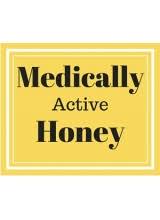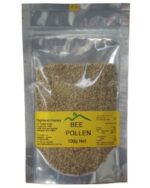Medically Active Honey

Australian Medically Active Honey is honey that has been specifically tested for its effectiveness in the control of Golden Staph bacteria.
The best known Medically Active Honey in the world is New Zealand’s Manuka honey which is produced from the Leptospermum Scorpianum plant. Whilst this plant is not native to Australia, we have many other varieties of Leptospermum and these plants produce honey that is just as effective or more effective than their New Zealand cousin.
The most active Australian Leptospermums are L. Polygalifolium and L. Flavescens.
A number of Eucalypts can also produce medically active honey, namely Stringybark, some Ironbarks, some Bloodwoods and White Mahogany.
Trees that produce medically active honey one year may not produce medically active honeys the following year, as the amount of rainfall and mineral takeup by the tree affects the quality of the honey.
When we get a batch of honey (at least 100kgs) that we think may be active, we send a sample to a TGA approved laboratory in Sydney for testing. The lab smears an agar dish with the bacteria and then places a sample of the honey in the centre of the dish.
After a short period (around 10 days), the dish is examined to see if the honey has killed the bacteria and if so, how extensively. The “kill rate” is then translated into an “Active” rating.
The Leptospermum honey candies very quickly, but this does not seem to affect the effectiveness of the honey, and in fact, makes the application of the honey to external wounds, burns or infections easier as the honey doesn’t run.
How to use Medically Active Honey
For an internal infection, eat a few teaspoons of the honey each day.
For external infections, burns or wounds, apply the honey to the injured area, cover with a pad and bandage so that the honey will not seep out and eat a few teaspoons of the honey each day. The pad will not stick to the wound and makes changing the dressing easier.
For mouth ulcers, eat the honey.
For acne, apply a small amount of the honey, either by using a cotton bud or clean finger, to the area and rub the honey in. Two or three treatments to the infected area are usually sufficient to prevent the infection forming.
Keep the honey in a dark place as sunlight destroys the honey’s effectiveness.
Click here to Shop for Medically Active Honey
-
 100g Bee Pollen$15.00
100g Bee Pollen$15.00 -
 Honey & Chilli – Mild 450g Jar$8.50
Honey & Chilli – Mild 450g Jar$8.50
